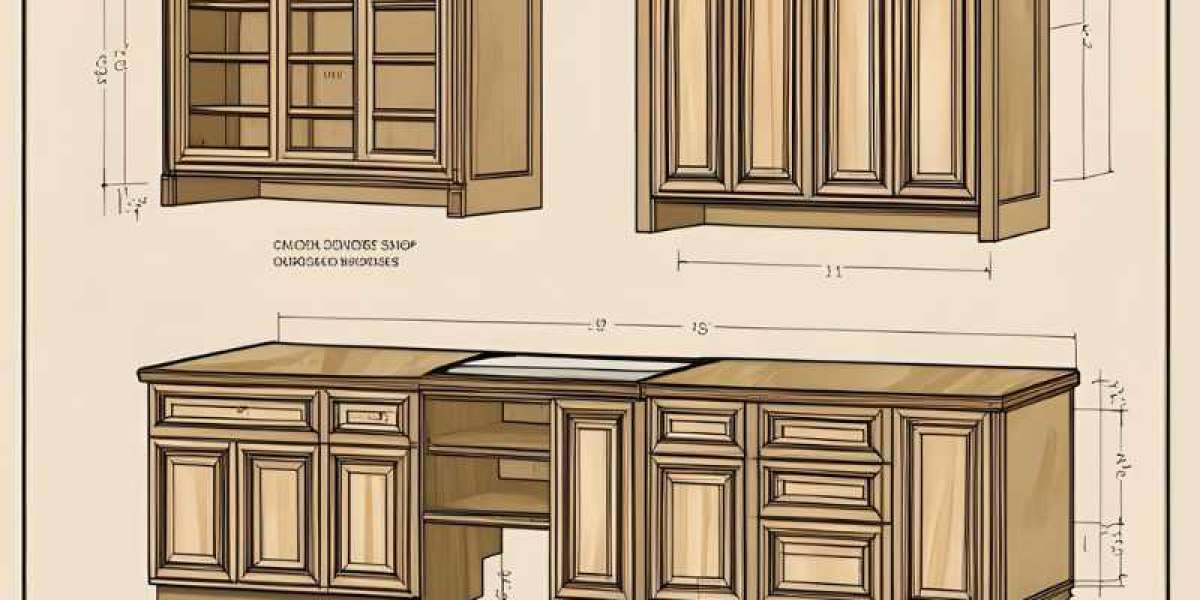Millwork plays a pivotal role in the aesthetic and functional design of interior and architectural spaces. Encompassing custom woodwork elements such as cabinetry, molding, doors, and trim, millwork not only enhances the visual appeal of a space but also reflects the craftsmanship and attention to detail in design execution.
With the growing complexity of modern construction and design standards, traditional millwork has evolved from hand-drafted blueprints to sophisticated digital modeling. Computer-Aided Design (CAD) has become an essential tool in millwork production, enabling precision, efficiency, and seamless collaboration among architects, designers, and manufacturers.
This introduction explores the fundamentals of millwork and examines how CAD technology has transformed the way millwork is conceptualized, designed, and executed in today’s architectural projects.
What is Millwork Drawings?
Millwork refers to wooden products that are made in a factory or workshop and used in building construction or interior decoration. These items are usually made from wood, but sometimes other materials like MDF (medium-density fiberboard) are used. The term "millwork" comes from the idea that these items are made or "milled" in a mill.
Common examples of millwork include doors, window frames, crown molding, baseboards, and cabinets. These pieces are custom-made or pre-made and then installed in homes, offices, or other buildings. Millwork adds both function and style to a space. For example, crown molding can make a room look more elegant, while a well-made door provides privacy and security.
Millwork can be found in many different styles, from traditional to modern, depending on the design of the building. Some pieces are simple and plain, while others have detailed carvings and patterns. It can be painted or stained to match the colors of the walls, floor, or furniture.
Millwork is important in construction because it helps complete the look of a building. It also helps cover gaps between walls and floors, or between doors and walls, giving the space a clean and finished look.
In short, millwork includes many wooden parts used to decorate or finish buildings. It brings both beauty and practicality to any space, making it an important part of interior and architectural design.
The Role of CAD in Millwork
CAD, which stands for Computer-Aided Design, plays an important role in millwork. Millwork involves making custom wood items like cabinets, doors, shelves, and trim. These products need to be accurate and well-designed. That’s where CAD helps.
Before CAD, people used hand drawings to show their ideas. This took a lot of time and could lead to mistakes. With CAD, designers can now create clear and detailed drawings on a computer. These drawings show the exact size, shape, and parts of the woodwork. This helps everyone understand the plan better.
CAD also saves time. A designer can quickly make changes to a drawing if needed. For example, if a client wants a bigger cabinet, the designer can easily update the drawing. CAD also helps in creating 3D views, so clients can see what the final product will look like.
Another benefit is that CAD helps with cutting and building the wood pieces. The digital drawings can be sent directly to machines that cut the wood. This makes the work faster and more accurate.
In short, CAD makes millwork easier, faster, and better. It helps designers plan well, avoid mistakes, and work with more detail. It also helps clients see the product before it is made. Today, CAD is a very useful tool in the millwork industry.
Core CAD Standards for Millwork
CAD (Computer-Aided Design) is very important in millwork because it helps create clear and accurate drawings. To make sure everyone understands these drawings, it is important to follow some basic CAD standards. These standards keep the work neat, consistent, and easy to read.
First, layering is key. Each type of object—like doors, panels, or trim—should be placed on its own layer. Layers should be named clearly, such as “Wall_Panel” or “Base_Cabinet.” This helps people turn layers on or off to see only what they need.
Second, use the correct line types and line weights. Thicker lines can show objects that are cut through, while thinner lines can show details or objects in the background. Dotted or dashed lines can show hidden items.
Next, dimensions and text should be clear and easy to read. Use one standard font and size throughout the drawing. Add labels to show sizes, materials, and notes where needed. Use leaders (arrows) to point to specific parts.
Always draw to scale, like 1:1 in model space, and then set the proper scale in paper space for printing.
Keep your title blocks updated with the project name, drawing number, date, and who made it. This helps with tracking changes and approvals.
Lastly, use blocks for repeated parts like hinges or handles. This saves time and keeps drawings uniform.
By using these core CAD standards, millwork drawings become more professional, clear, and easier for everyone to understand and build from.
Common Pitfalls in Millwork Drafting
Millwork drafting is an important part of woodworking projects, especially for custom furniture, cabinetry, and interior finishes. However, even skilled drafters can make mistakes. Here are some common pitfalls to watch out for.
- Incomplete Drawings: Sometimes, important details like dimensions, materials, or section views are missing. This can cause confusion during production and delays in the project.
- Poor Communication: If the drafter does not clearly show how parts fit together, builders may misunderstand the design. Labels, notes, and clear lines help avoid this issue.
- Wrong Measurements: Even a small mistake in measurement can lead to big problems. Always double-check dimensions and scale to make sure everything fits properly.
- Ignoring Tolerances: Wood can expand or shrink depending on humidity. If this is not considered in the design, the finished product might not work as planned.
- Overlooking Hardware: Not showing hinges, slides, or fasteners in the drawings can cause trouble later. It’s important to include all hardware in the plans.
- Not Following Standards: Millwork often follows industry standards for sizes and details. Ignoring these can make the job harder for the people building or installing the piece.
To avoid these pitfalls, always review your drawings carefully, ask for feedback, and keep clear communication with the rest of the team. Good drafting leads to smooth production and a better final product.
The End Note
Millwork is a vital component in architectural and interior design, combining function, beauty, and craftsmanship. As the industry continues to evolve, the adoption of CAD technology has become essential for ensuring precision, consistency, and efficiency in millwork drafting.
By following core CAD standards—such as clear layering, proper dimensioning, and consistent use of blocks—drafters can produce professional and accurate drawings that streamline the manufacturing and installation processes.
Avoiding common pitfalls, like incomplete drawings and incorrect measurements, further enhances the reliability of millwork documentation. Ultimately, a solid understanding of millwork CAD standards empowers drafters to contribute to high-quality projects that meet both design intent and practical requirements.







